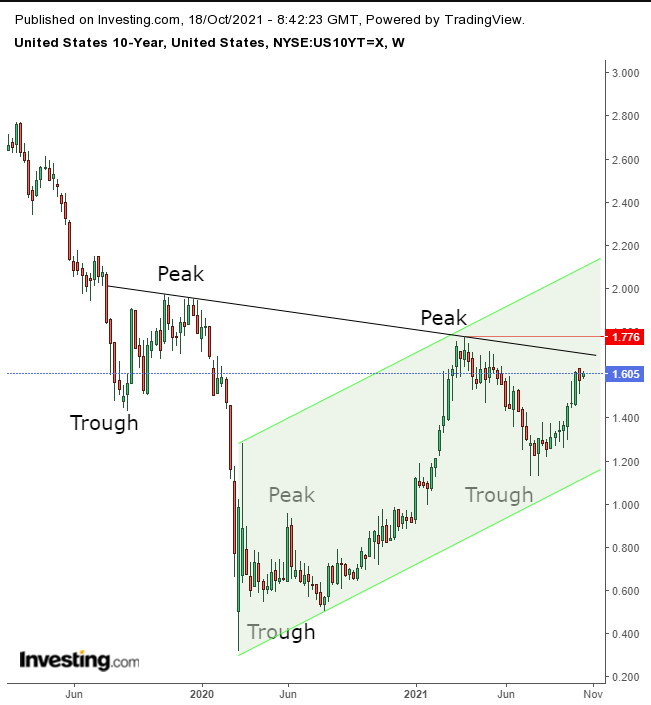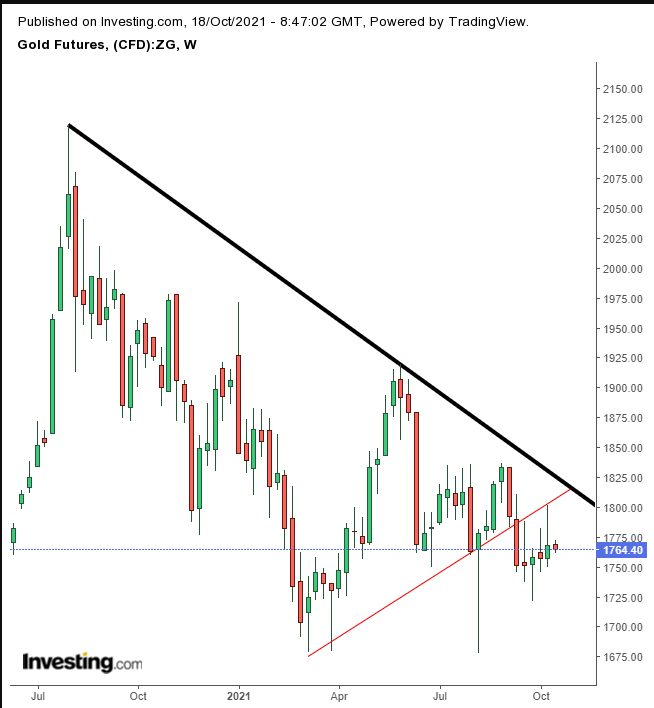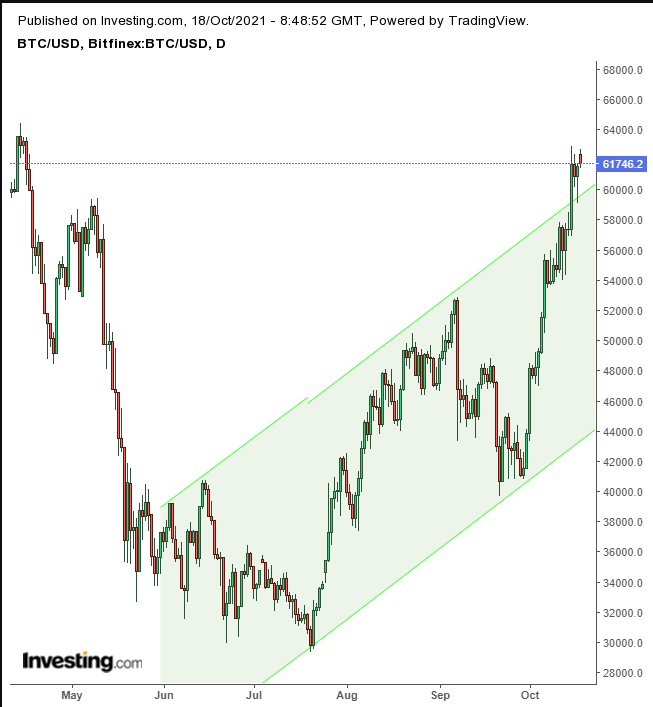- Colliding market themes continue
- Bitcoin rallies as first US ETF due to start trading
- Gold slides
- US building permit figures are published on Tuesday.
- On Wednesday the EIA crude oil inventories report is released.
- Canadian CPI figures for September are also printed on Wednesday.
- The FTSE 100 dropped 0.25%
- The STOXX 600 fell 0.5%
- Futures on the S&P 500 fell 0.3%
- Futures on the NASDAQ 100 fell 0.5%
- Futures on the Dow Jones Industrial Average fell 0.3%
- The MSCI Asia Pacific Index rose 1.3%
- The MSCI Emerging Markets Index rose 1.3%
- The British pound was little changed at $1.3741
- The Dollar Spot Index rose 0.2%
- The euro fell 0.2% to $1.1579
- The Japanese yen fell 0.1% to 114.37 per dollar
- The offshore yuan was little changed at 6.4338 per dollar
- Britain’s 10-year yield advanced two basis points to 1.13%
- The yield on 10-year Treasuries advanced four basis points to 1.61%
- Germany’s 10-year yield advanced two basis points to -0.14%
- Brent crude rose 0.7% to $85.45 a barrel
- Spot gold fell 0.2% to $1,763.99 an ounce
Key Events
Disappointing growth figures from China as well as soaring energy prices globally reinforced concerns about inflation and drove US futures on the Dow, S&P, NASDAQ and Russell 2000 as well as European stocks lower in trading on Monday.
Oil rallied along with the energy sector.
Global Financial Affairs
NASDAQ 100 and Russell 2000 futures outperformed contracts on the S&P 500 and the Dow Jones this morning, which is confusing for many reasons.
First, if investors are concerned about inflation, why are small caps outperforming? If the economy doesn't reopen due to the coronavirus, smaller domestic firms will suffer.
Second, why are tech contracts outperforming? Will rising interest rates allow borrowers to sustain record stock market highs?
Finally, why are the Russell and NASDAQ leading the advance when they are meant to represent two contradictory views about the fate of the economy?
We're seeing this as another example of a lack of market coherence, indicating rather clearly that the market does not always behave rationally.
It is worth noting that today's futures selloff comes on the heels of the best week for the S&P 500 since July.
In Europe, the STOXX 600 also opened lower, dragged down by the consumer discretionary and retail sectors, as soaring commodity costs intensified the energy crisis. Miners and oil and gas providers were the bright spots, as they actually benefited from the spike in their underlying commodities.
Stocks in Asia were weighed down by data out of China, revealing the world’s second-largest economy grew at the slowest rate in a year during the third quarter, due to power shortages, supply chain disruptions and panic in the property market amid a regulatory crackdown on highly leveraged investments.
China’s GDP slowed to 4.9% YoY, missing the 5.2% estimates. Industrial production expanded by 3.1%, well below the 4.5% expected. Still, China’s Shanghai Composite declined by just 0.1%, and Hong Kong’s Hang Seng was 0.3% higher. But the FTSE China A50 tumbled 2.2%.
Yields on the 10-year Treasury note were boosted by inflationary fears that had investors hiding their money in bonds.

Rates are aiming to provide an upside breakout of a massive H&S bottom.
The dollar opened higher, tracking the gain in yields.

The greenback has been fluctuating for the past three weeks after completing a large double bottom. Will it extend the currency's uptrend, after establishing a major bottom?
Gold fell on the rise in yields and dollar strength. Precious metals are struggling as markets expect the Federal Reserve to start tapering in November.

The yellow metal may have completed a weekly H&S continuation pattern, which means it may continue along its downtrend.
Bitcoin opened higher as the first Bitcoin Futures ETF, the Bitcoin Strategy ETF (BITO), is due to start trading this week.

The cryptocurrency will battle between the bullishness of breaking higher than its rising channel and the presumed resistance of the April; record peak. The outlook for BTC remains a contentious issue in markets with some experts forecasting its ultimate demise even as others believe the crypto asset class is only heading higher.
Oil built on its eight-weekly advance, rising to its highest level since 2014. WTI gained for the third straight day, heading toward $83.
